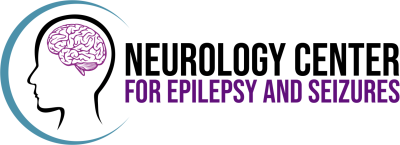If you have seizures or are the parent of a child who has seizures, then…

7 Effective Treatments for Chronic Headaches
Chronic headaches and migraines can be detrimental to your daily life. They can be debilitating, putting a wrench in your active routine, and preventing you from living comfortably. The Neurology Center for Epilepsy and Seizures performs treatments that help patients like you who experience severe pain during chronic headaches. Below are some of the most common and effective treatments we offer for chronic headaches and migraines.
Treatment #1 Antidepressants
Antidepressant medications are the most commonly prescribed treatment for migraines and chronic headaches. Although we don’t know what causes migraines, studies have shown patients experience a decrease in serotonin as they experience a migraine. Since antidepressants are used to increase serotonin and norepinephrine, it makes sense that this treatment seems to work.
Treatment #2 Beta-Blockers
Another popular medication to treat chronic headaches is a beta-blocker. Beta-blockers prevent beta receptors from interacting with certain chemicals in the brain. They were initially developed to help patients who experience cardiac symptoms, but beta-blockers have proven highly effective in preventing chronic headaches.
Treatment #3 Acupuncture
Acupuncture is regarded as part of stress management therapy. This ancient technique uses thin needles to target specific points throughout the body to relieve stress. While results are often mixed among patients, acupuncture has shown to help reduce the frequency and severity of chronic headaches.
Treatment #4 Ganglion Block
A stellate ganglion is a network of nerves located in the neck on either side of the larynx. Its function is to govern sensory processing and blood flow for your entire upper body. Local anesthesia can be injected into that region of your neck to treat headaches. This treatment is useful if you experience migraines or cluster headaches.
Treatment #5 Botox
Yes, Botox. Botox isn’t just for keeping a youthful appearance. Botox, or botulinum toxin, can be applied in small doses to reduce muscle contractions for about three months. When applied to muscle fibers that produce headaches, it can block pain transmissions to the brain. This treatment does have its risks, and it’s only prescribed if you experience more than fifteen headaches in a month.
Treatment #6 Oxygen therapy
Oxygen inhalation is another treatment used to reduce migraine pain. Although it remains unknown why it works, it seems to work for many patients. Cerebral blood flow increases during a migraine, but oxygen inhalation marks a decrease in blood flow to your brain. This can ease the pain you experience during a migraine.
Treatment #7 Calcitonin gene-related peptides (CGRP)
This is the newest treatment for chronic headaches. CGRP is a protein that causes inflammation and pain in the nervous system in people who experience migraines. CGRP treatment blocks these proteins from reaching your nervous system, preventing your migraine attacks altogether.
To schedule an appointment with the Neurology Center for Epilepsy and Seizures, call our office or book online.



